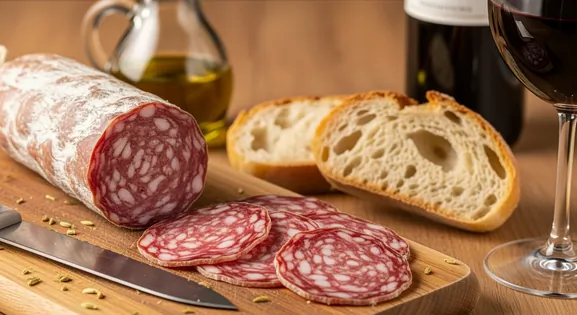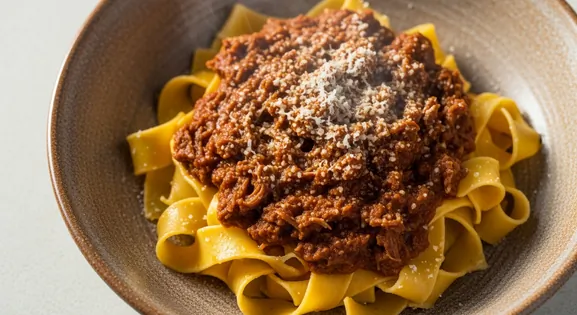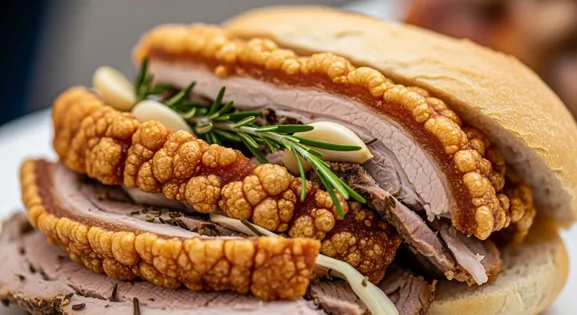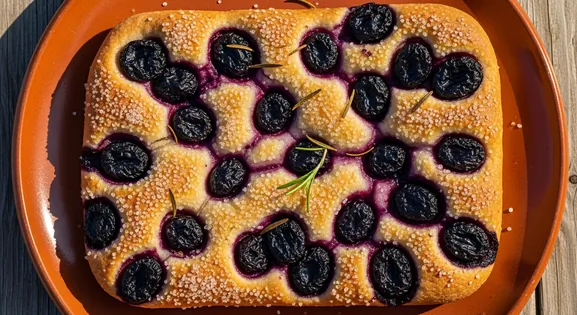Lampredotto in Florence
Lampredotto

The Essential Guide to Lampredotto
Stepping into Florence, the aroma of simmering broth often leads you to a local 'trippaio'. Lampredotto, the city's beloved street food, offers a unique culinary journey into Florentine tradition. It's more than just a sandwich; it's a taste of the city's soul, best enjoyed standing among locals.
New to Lampredotto? Learn all about its history in our complete guide.
Culture and Customs
Local Significance
Lampredotto is a cornerstone of Florentine identity - a point of pride that distinguishes the city's cuisine from other Italian regions. It represents the 'what's humble can be sublime' philosophy of Tuscan cooking.
Eating Customs
- Always eaten fresh and hot - never taken home for later.
- Using the paper wrapping to catch drips is expected.
- Acceptable to ask for extra broth ('più brodo') to moisten the sandwich.
- Traditional to have a small glass of Chianti wine with your lampredotto.
How Locals Eat It: Variations
Lampredotto Doppio
Double portion of meat for the especially hungry, offered by many Florentine vendors for 1-2 EUR extra.
Crostini di Lampredotto
A Florentine appetizer version - small toasts topped with chopped lampredotto, found in some traditional restaurants.
Lampredotto in Zimino
A traditional Florentine preparation where lampredotto is cooked with spinach and other greens, often served as a stew rather than a sandwich.
Lampredotto al Sugo
A saucier preparation popular in some Florentine eateries, where the tripe is further cooked in tomato sauce.
Insider Tips for Lampredotto
Always ask for your bread to be "bagnato" (wet), meaning the top half is dipped in the rich cooking broth. This is the traditional Florentine way and adds immense flavor and moisture.
Lampredotto is made from the fourth stomach of a cow, but its preparation makes it tender and flavorful, not gamey. Approach it with an open mind; it's a true local delicacy.
Many trippai offer a small glass of local red wine (often Chianti) to accompany your lampredotto. This pairing is classic and enhances the experience.
Where to Find Lampredotto in Florence
Mercato Centrale
The historic covered market houses several famous lampredotto vendors, particularly on the ground floor, offering a bustling and convenient spot for a quick bite.
San Lorenzo Market area, Florence Cathedral (Duomo) nearby
Morning, Lunch
Piazza de' Cimatori
Home to the famous Trippaio del Porcellino, one of the city's most renowned lampredotto stands.
Loggia del Porcellino, Via dei Cimatori
Lunch, Afternoon
Sant'Ambrogio
This less touristy area has excellent vendors both inside and outside the market.
Mercato di Sant'Ambrogio, Via de' Macci
Morning, Lunch
San Frediano
This authentic neighborhood across the Arno river has traditional lampredotto stands favored by locals.
Piazza dei Nerli, Via di Santo Spirito
Lunch
Vendor Tips
- Ask for your bread to be well-soaked in broth ('ben bagnato') for the full experience.
- When vendors ask 'Con tutto?' they're asking if you want all available sauces.
- Some vendors offer a small plastic cup of extra cooking broth - great for dipping.
- The more established vendors sometimes close early when they sell out - aim for before 2 PM.
Finding an Authentic Lampredotto
What to Look For
-
Vendor's pot actively simmering with visible steam
In Florence, reputable lampredottai maintain their broth at a constant simmer, indicating proper cooking and holding for optimal quality throughout service.
-
Clean preparation area with separate handling of money and food
Quality vendors in Florence use tongs for food and either have a separate person handle money or use a wash basin between transactions.
-
Bread dipped in broth ('bagnato') upon request
Authentic Florentine vendors offer to dip the top bun in the cooking broth, adding flavor and ensuring optimal temperature - both a culinary tradition and a sign of quality preparation.
What to avoid
-
Lukewarm broth without visible steam
Florence's variable climate requires constant heat maintenance. Proper lampredotto should always be held in steaming, not merely warm, broth.
-
Pre-sliced lampredotto sitting outside the cooking broth
Traditional Florentine vendors keep the meat immersed in simmering broth until serving. Pre-sliced portions sitting out risk temperature abuse.
-
Vendors without running water or hand washing facilities
Given the nature of the product, proper hygiene is essential. Quality Florentine vendors maintain clean operations with proper washing facilities.
The Traveler's Essentials
Dietary Information
Important Note for Travelers: Your safety is our priority. Below are the common allergens associated with the traditional preparation of this dish. However, recipes and ingredients can vary significantly between establishments. Always confirm all ingredients directly with the food vendor before ordering, especially if you have a severe allergy.
Potential Allergens
Dietary Suitability
Price Guide
Budget Tips
- Traditional street vendors ('trippai') offer the best value at 4-5 EUR per sandwich.
- Mercato Centrale vendors may charge 5-7 EUR but are convenient for tourists.
- Some newer 'gourmet' lampredotto stands charge 6-8 EUR for special preparations.
- Avoid places primarily targeting tourists - prices should never exceed 8 EUR for a standard sandwich.
- Some vendors offer a small glass of wine included in the price - good value.
Serving & Seasonality
Served in parchment paper or wax paper wrapping. Eaten standing at the counter ('al banco') or taken to nearby piazzas. Typically eaten immediately while hot.Best Times to Enjoy
- Lunch: The traditional and busiest time for lampredotto consumption (12 PM - 2 PM).
- Mid-morning: Some Florentines enjoy lampredotto as a substantial mid-morning meal (10 AM - 11:30 AM).
- Afternoon: Less crowded time to try lampredotto when locals are less likely to be on lunch breaks (2:30 PM - 5 PM).
Seasonal Availability
Available year-round in Florence, though considered especially satisfying in cooler months.
How to Order with Confidence
When ordering, simply ask for "un panino al lampredotto." The vendor will likely ask "Con tutto?" (With everything?), meaning both salsa verde (green herb sauce) and salsa piccante (spicy sauce). Always say "Sì, con tutto!" for the authentic experience. You can also specify "ben bagnato" if you want the bread extra soaked. Don't be shy to ask for "più brodo" (more broth) on the side for dipping.
Mastering the Experience
Navigating Florence's Historic Tripe Carts
Learn how to identify and find the most authentic lampredotto vendors and their distinctive carts across Florence, ensuring a truly local culinary experience.
- Visit the traditional stand at the Loggia del Porcellino (Mercato Nuovo) operated by the same family for generations.
- Explore the Sant'Ambrogio market area where local workers gather for lunch at established tripe vendors.
- During lunch hours (12-2 PM), look for the distinctive yellow or blue carts ('trippai') with lines of locals waiting.
- Seek out Nerbone in the Mercato Centrale for one of the city's most famous indoor lampredotto counters.
- For an authentic experience, visit the stands along Viale Guidoni or near Porta al Prato where working-class Florentines gather.
Understanding Florence's Lampredotto Variations
Discover the subtle yet distinct regional and vendor-specific variations of lampredotto found throughout Florence, helping you choose your preferred style.
- City center vendors often serve a more refined, cleaner-tasting version catering to a broader clientele.
- Outskirt stands like those in Novoli or near Cascine Park typically offer heartier, more rustic interpretations.
- Some vendors specialize in 'lampredotto intero' including all parts, while others offer 'lampredotto senza spannocchia' (without certain tougher sections).
- Traditional vendors offer both 'salsa verde' (green herb sauce) and 'salsa piccante' (spicy sauce) as authentic Florentine condiments.
- During cooler months, some historic vendors offer 'lampredotto invernale' with richer broth and additional spices.
Adapting to Florentine Street Food Customs
Embrace the authentic Florentine way of enjoying lampredotto by understanding local customs, from ordering to eating etiquette.
- Order using proper terminology: 'un panino al lampredotto, bagnato, con salsa verde e piccante' for the full experience.
- Eat standing at the cart as locals do - sitting down with lampredotto is not traditional in Florence.
- Visit during proper lunch hours (12:30-2 PM) when tripe is freshest and vendors are most attentive.
- During rainy Florence days, bring your own napkins as vendors provide minimal paper.
- Follow local custom of consuming lampredotto with a glass of simple red wine (un bicchiere di rosso) or water, never soft drinks.
Our Commitment to Quality
At Tasteplorers, our mission is to provide the most accurate and useful travel information in the world. To achieve this, all content on this site is created through our unique editorial framework. We utilize leading AI research tools, guided by our proprietary prompts, and a multi-stage validation process. This entire system is overseen by our editorial team to ensure everything we publish meets our high standards for accuracy, cultural nuance, and practical value for travelers.
Learn more about our Editorial Process and our Mission.
Countries
Explore regions
Europe
Discover Europe's diverse culinary landscape, from Mediterranean flavors to hearty Alpine fare. Learn to navigate markets, decode menus, and eat like a local.
Latin America & Caribbean
Discover the vibrant cuisines of Latin America & the Caribbean. Our expert guide covers everything from Mexican street food to Peruvian ceviche and market tips.
Oceania
Explore Oceania's diverse food scene. Learn about Polynesian earth ovens, Fijian feasts, and the vibrant café culture of Australia and New Zealand.
Southeast Asia
Explore Southeast Asia's diverse food cultures from Thailand to Vietnam. Get expert tips on navigating spice levels, choosing quality vendors, and understanding the rich traditions of the region.



